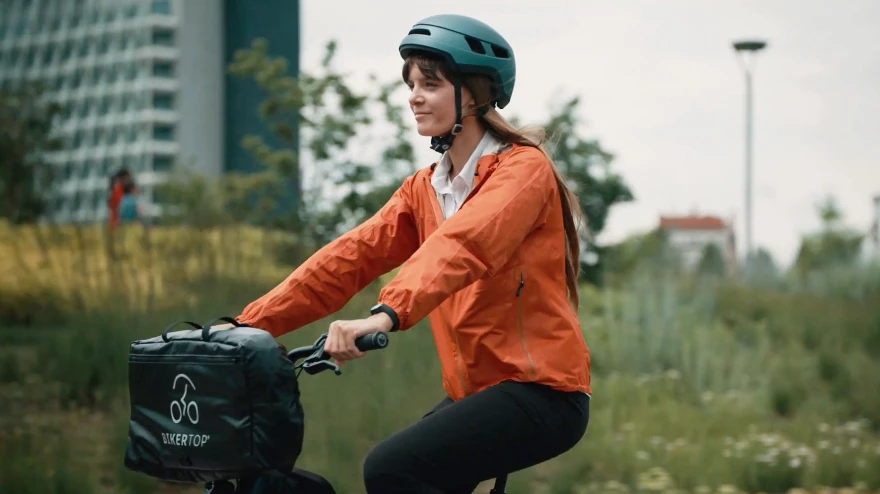If you're carrying a folded umbrella and it starts raining, you just pop that umbrella open and keep walking. The Italian-designed BikerTop is designed to work in much the same way, although it's made for use by cyclists.
When not in use, the BikerTop sits folded down in a bag on the handlebars. That bag attaches to the bars via a quick-release mounting bracket, although it can also be key-locked in place when the bike is parked in public.
Once it starts raining, the rider stops, folds out the BikerTop's two aluminum vertical support arms, then extends those telescoping arms along with the flexible rain shield. That shield is made of waterproof nylon with a transparent polyurethane windshield, plus it has PVC mesh "wings" on either side.
The whole setup process reportedly takes just 10 to 15 seconds, and the shield is claimed to withstand winds of up to 35 km/h (22 mph). There is no windshield wiper, but as the designers point out, most scooter windshields don't have wipers, either.
Reflective glass beads in some parts of the shield help make it visible to drivers at night, plus it features a space where a third-party magnetic headlight can be attached to the mount (even when the shield is still in the bag). The whole rig weighs a claimed 3 kg (6.6 lb), and features an inner cargo pocket for carrying items such as smartphones or water bottles.
Should you be interested, the BikerTop is currently the subject of an Indiegogo campaign. A pledge of €167 (about US$198) will get you one, when and if they reach production. The planned retail price is €279 ($331). You can see the device in use, in the following video.
Potential backers might also want to check out the existing Dryve and Veltop systems.





